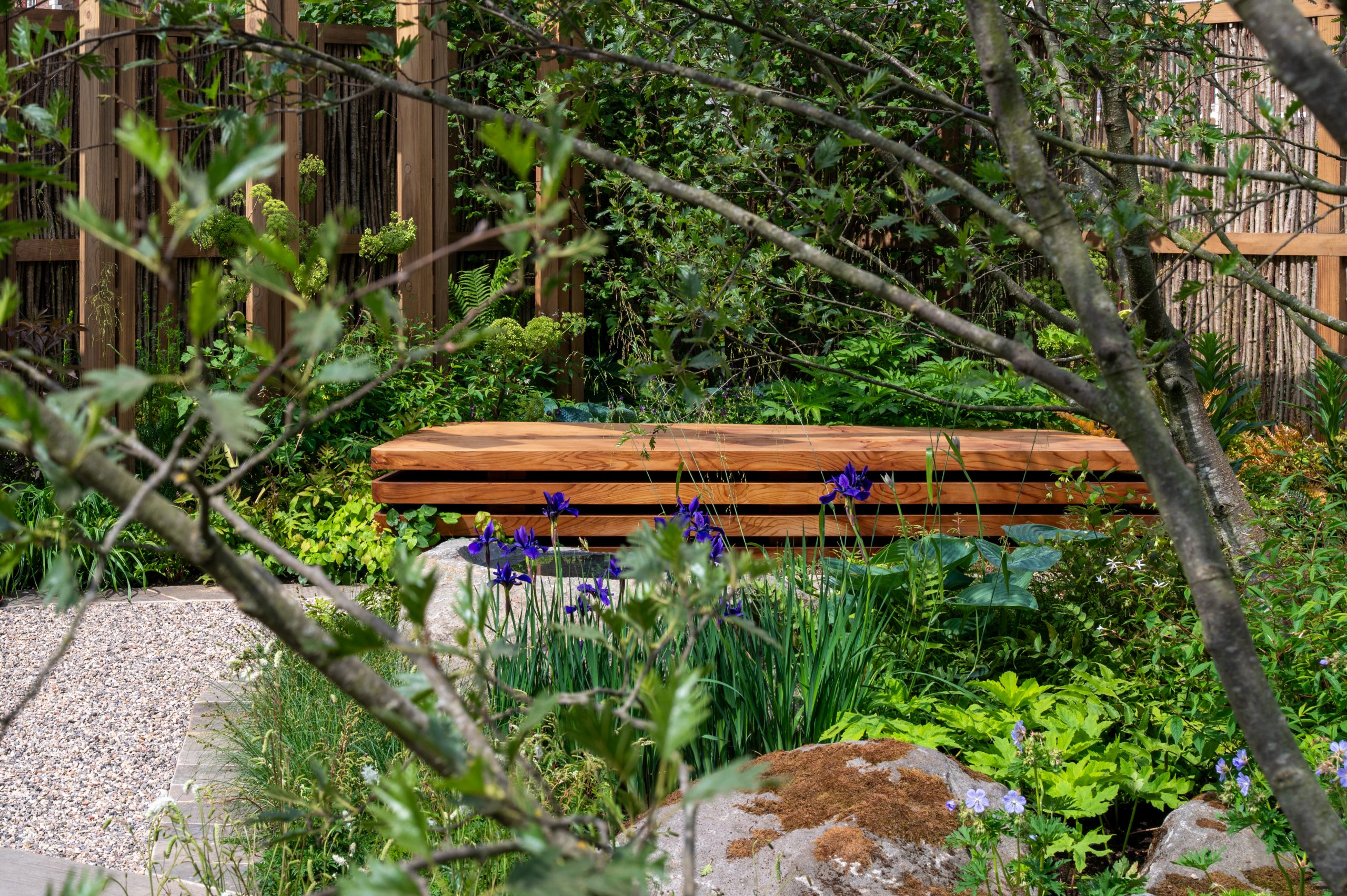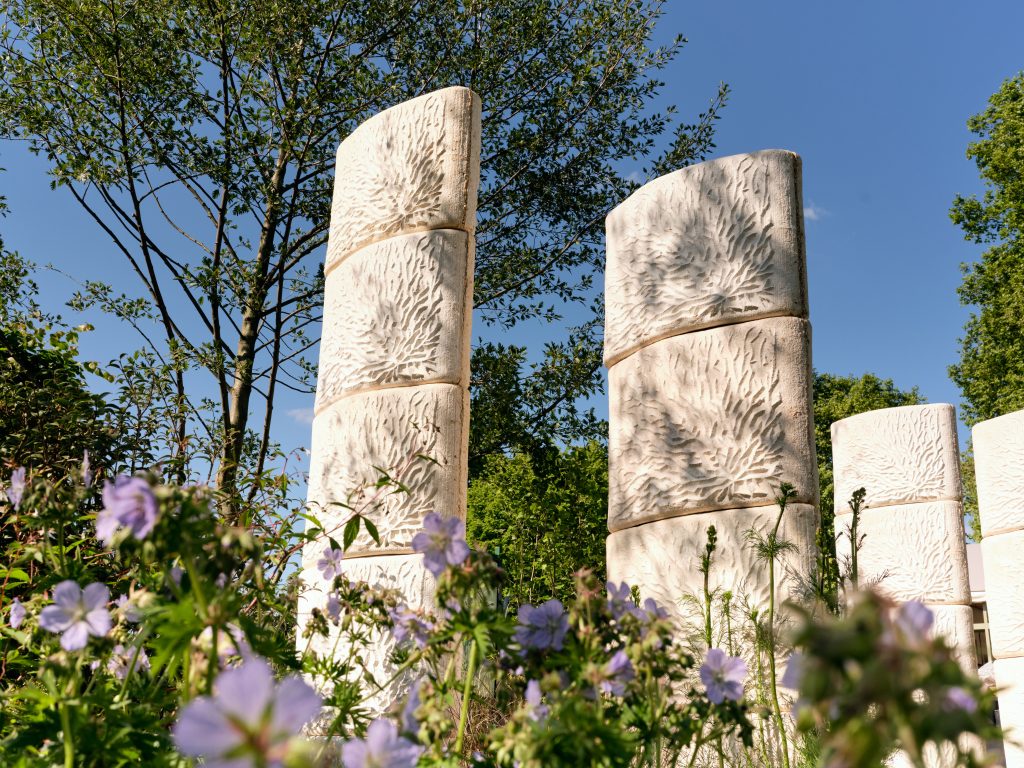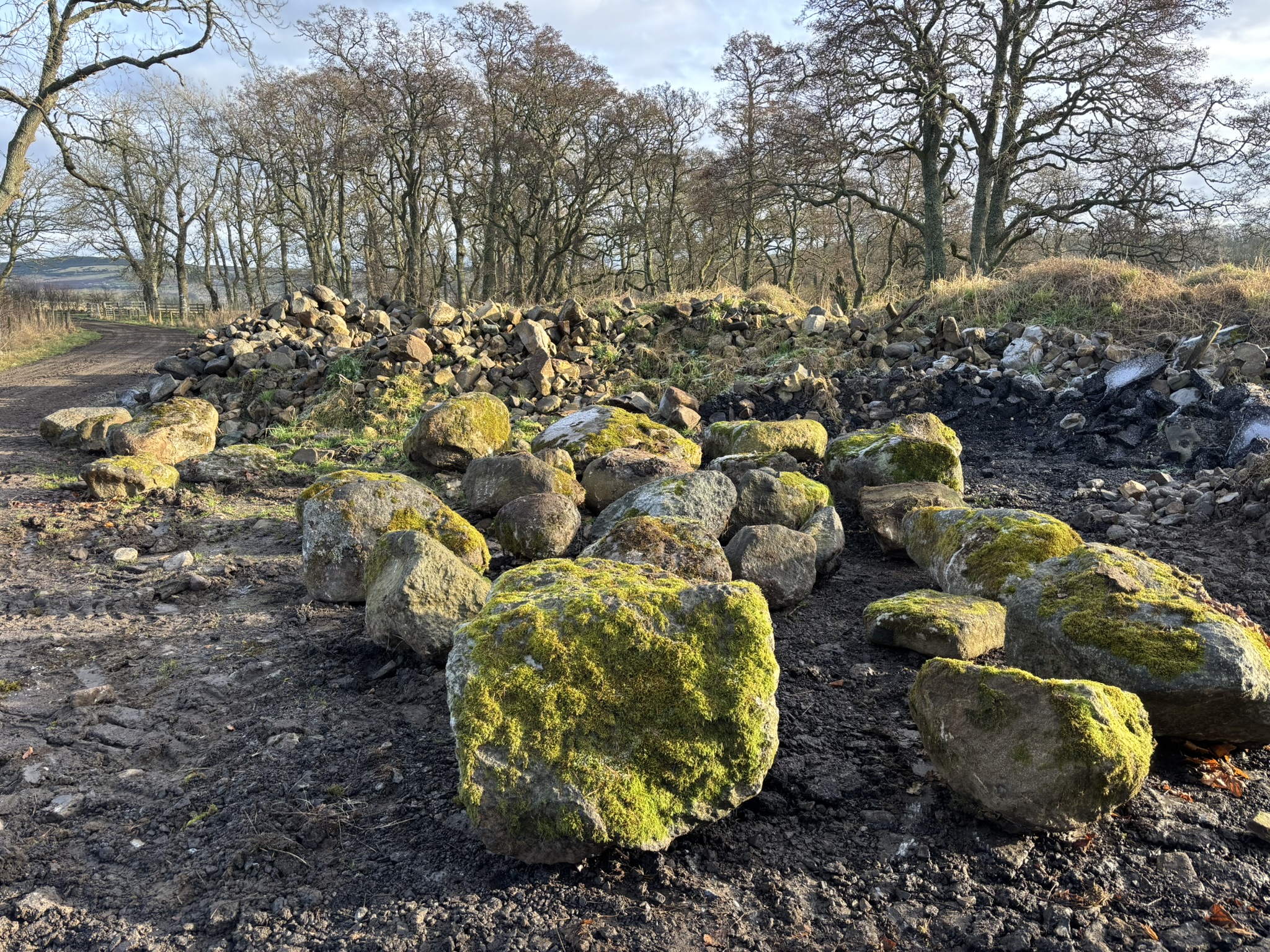Pathway are delighted to have the opportunity to have a show garden at the RHS Chelsea Flower Show 2025.
It has been designed to showcase the work our charity does to improve healthcare for people experiencing homelessness, ensuring they’re supported out of homelessness to better health and on to a safe place that can be called home.
Designed and created with members of Pathway’s Lived Experience Team who have personal experience of homelessness, the garden represents individual journeys away from poor health and homelessness to recovery and safety.
The pathway through the garden represents the demanding nature of these journeys, marked by the need to confront and overcome significant obstacles – exclusion, stigma, barriers to healthcare and housing. These are powerfully represented at the start by an asymmetric pathway, restricted views, large stone boulders and towering mycelium structures.

As the pathway progresses, a bench, pergola and water feature represent rest, shelter and sustenance – fundamental elements of life that people experiencing homelessness are denied, but can find with our support. The view from the pathway gradually opens up, celebrating new possibilities and opportunities.
Led by doctors and nurses, and working with the NHS, Pathway helps people out of homelessness by creating supportive care networks and expert hospital teams that improve health and stability and sustain life.
This work is symbolised in a standout feature of the garden – the innovative mycelium structures. Mycelium is a remarkable fungus which supports and sustains healthy woodland systems by sharing nutrients and forming networks within the root systems of plants, an excellent symbol of the vital connections and healthcare networks which Pathway creates and supports.

Reflecting our mission to create sustainable change in tackling health and housing inequalities, sustainability is a key focus of the garden at every level. It is built entirely from reclaimed, recycled and upcycled materials (with no concrete or cement), and the remarkable mycelium structures have been grown from waste reclaimed from last year’s RHS show, emphasising the need for sustainable changes in improving health outcomes for all.

Alnus glutinosa ‘Laciniata’, or cut-leaf alder, is a variety of the native species, chosen for the delicate, medium-sized canopy it provides to the garden.
Corylus avellana, or hazel, is selected as a native species and provides contrast to the cut-leaf alder.
Osmanthus burkwoodii is selected to provide structure, repeated thoughout the garden.
Geranium maculatum ‘Beth Chatto’ is chosen for its ability to meander among coarser, large-leaved herbaceous plants.
Carex divulsa, or grassland sedge, is a native groundcover that blends well with other plants in part shade.
Polystichum setiferum, ‘Plumosomultilobum’ Group occurs in the greatest quantity, though it is one of five fern species used. With over 360 ferns in the garden, they form the bulk of the herbaceous planting – chosen both for their suitability to the moist, shaded setting and for their beauty and the contrast they offer to other plants.